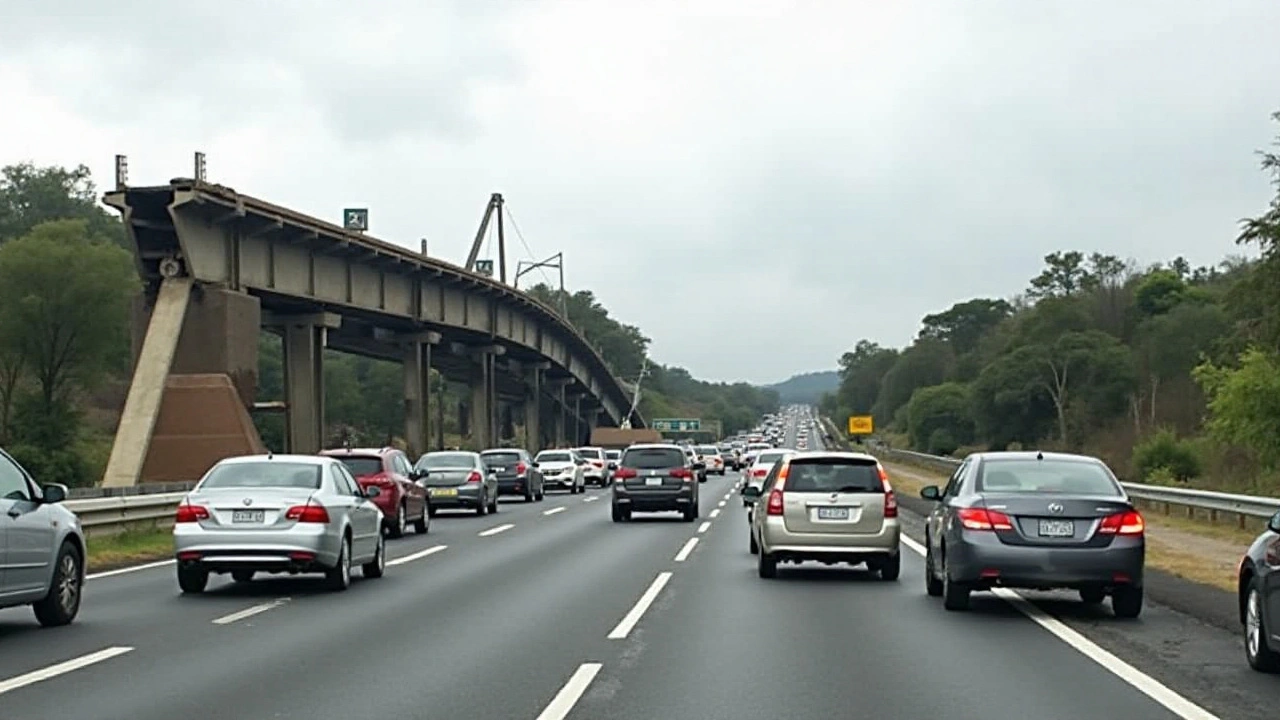Bridge Collapse – Latest News and Insights
When a bridge gives way, it grabs headlines fast. From downtown overpasses to rural crossings, each incident raises urgent questions about safety, design, and who’s responsible. Below you’ll find a quick rundown of what’s been happening, why bridges fail, and what officials do right after a collapse.
Why Bridges Fail
Most bridge failures boil down to a few common factors. First, age and wear matter a lot. Steel and concrete can corrode, especially in places with salty air or heavy rain. When corrosion eats away at reinforcement bars, the structure loses strength without anyone noticing.
Second, poor maintenance is a silent killer. Cracks, rusted joints, and worn bearings need regular inspection. Skipping these checks lets small problems grow into big ones. In many recent collapses, investigators found missed signs like widening cracks or sagging decks that could have been fixed for a fraction of the repair cost.
Third, unexpected overloads can push a bridge past its design limit. Heavy trucks, construction equipment, or even a sudden surge of traffic during a holiday can stress the deck and supports. When the load exceeds what the engineers planned, the bridge can buckle in seconds.
Finally, natural forces play a role. Floods wash out foundations, earthquakes shake joints, and landslides undermine supports. In the past year, a few collapses were directly linked to unusually high river levels that eroded riverbed foundations.
How Authorities Respond
After a bridge collapse, the first priority is rescue and medical aid. Local fire and rescue teams, often backed by the army or navy, go in quickly to pull people to safety. Meanwhile, traffic is rerouted, and emergency signs warn drivers to stay away.
Next comes the investigation. Engineers on site take photos, collect debris, and test materials to find the exact cause. Their report feeds into a larger safety review that can affect thousands of similar bridges across the country.
Once the cause is known, authorities issue repair or demolition plans. In many cases, a temporary bridge—called a “detour bridge”—gets erected within weeks to restore a critical crossing. Permanent fixes may involve replacing girders, strengthening foundations, or even rebuilding the whole span.
Public communication is also key. Governments now use websites, social media, and local radio to keep commuters informed about road closures and alternate routes. Transparency helps calm nerves and prevents misinformation from spreading.
What can you do as a road user? Keep an eye on posted weight limits and avoid stopping on bridges unless absolutely necessary. If you notice a crack or a sagging section, report it to the road authority right away. Small observations can spare lives later.
Bridge collapses are dramatic, but they also shine a light on how we maintain critical infrastructure. By staying informed about the reasons behind failures and the steps taken afterward, you can travel safer and help hold officials accountable for better upkeep. Keep checking this page for the latest updates on bridge incidents worldwide.

6
Nov
A crucial bridge collapse on the N2 highway at Isipingo in KwaZulu-Natal results in significant traffic disruption. This unexpected incident has led to the shutdown of the road, necessitating detours and altering travel plans for many motorists. The causes of the collapse and details concerning potential casualties remain unspecified, leaving commuters in search for alternative routes.
Read More
